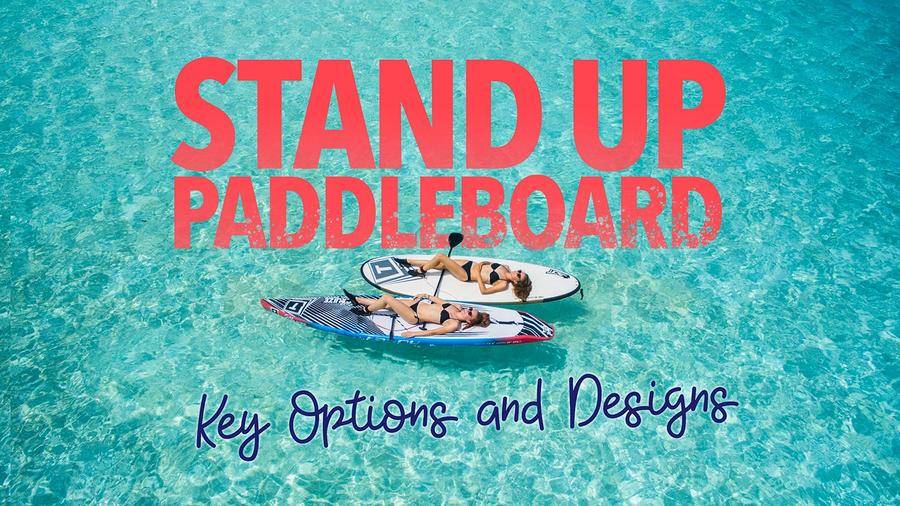If you’re in the market for a new stand up paddleboard (SUP), you’re probably overwhelmed with the wide variety of options and designs.
Let’s navigate through several key SUP options: construction (inflatable vs. rigid), length, weight, width, and fin-type. Then we’ll help you get your head around five of the most popular SUP designs: yoga boards, wave boards, touring boards, racers, and all-arounders.
KEY SUP OPTIONS
CONSTRUCTION: INFLATABLE VS. RIGID
Inflatables are more portable, easier to store, andtend to cost significantly less than rigid boards, giving inflatables the edge with beginners, frequent travelers and those on a budget. However, rigid boards tend to offer superior speed and responsiveness, giving them an advantage with more experienced riders willing to pay a bit more for performance.
LENGTH
The length of your board will have an impact on every aspect of your SUP experience. Short SUPs tend to be slower than long SUPs, but more responsive and maneuverable. Conversely, long SUPs tend tobe less reactive and maneuverable than short SUPs, but faster. Medium-length boards offer a comfortable compromise between the two extremes, providing riders with a decent degree of responsiveness, maneuverability, and speed in a wide variety of conditions.
WEIGHT
This is one of the most critical SUP specs to consider. SUP’s weight not only affects the board’s buoyancy but your capacity to carry it to and from the water. So take a good look at a board’s weight before you buy it.
WIDTH
In general, the wider your SUP, the more stable it will be in the water. Therefore, beginners gravitate toward more full boards, while more experienced riders gravitate toward narrower ones.
FIN TYPE
Two of the most common fin-types are single-fin and tri-fin. Single-fin boards, with their one large fin, offer the highest stability and are ideal for touring and racing on flat water. Tri-fins, with their three small fins (like many modern surfboards), provide the greatest maneuverability and are suitable for wave riding.
FIVE POPULAR DESIGNS
YOGA BOARDS
Yoga boards have perhaps the most distinctive profile on our list. Designed to perform as floating yoga mats, yoga boards tend to have soft tops for comfort; wide hulls and anchors for improved stability; and topside extras to fasten yoga-related equipment and accessories.
WAVE BOARDS
Wave boards look and work a lot like regular surfboards. These SUPs tend to be relatively short tri-fins that are highly responsive and maneuverable in waves and whitewater.
TOURING BOARDS
Touring boards tend to be long and relatively narrow single-fins. Their sleek design makes them faster than their shorter counterparts. They’re also easier to keep straight when you’re gliding across the water.
RACERS
Racers are easy to spot. You can think of them as touring boards taken to the extreme. They are ultra-long, ultra-narrow, and generally pointed on both ends. Racers are perfect for super-fast, straight shots across the water.
ALL-AROUNDERS
Ideal for beginners, these boards are generally medium-length, wide SUPs built for stability and a wide variety of conditions from flat water to whitewater. They are often inflatable, although you can find plenty of rigid all-arounders as well.
THE BEST SUP FOR YOU
When shopping for a stand up paddleboard, it’s important to look at each contender from two points of view: the options and the overall design. Some of the critical choices to look for include construction type (rigid vs. inflatable), length, width, weight, and fin-type. Some of the most popular designs include yoga boards, wave boards, touring boards, racers, and all-arounders.
When considering the right SUP for you, also ask yourself whether it’s a good fit for your size, skill-level, travel requirements, storage needs, and ideal riding conditions.






